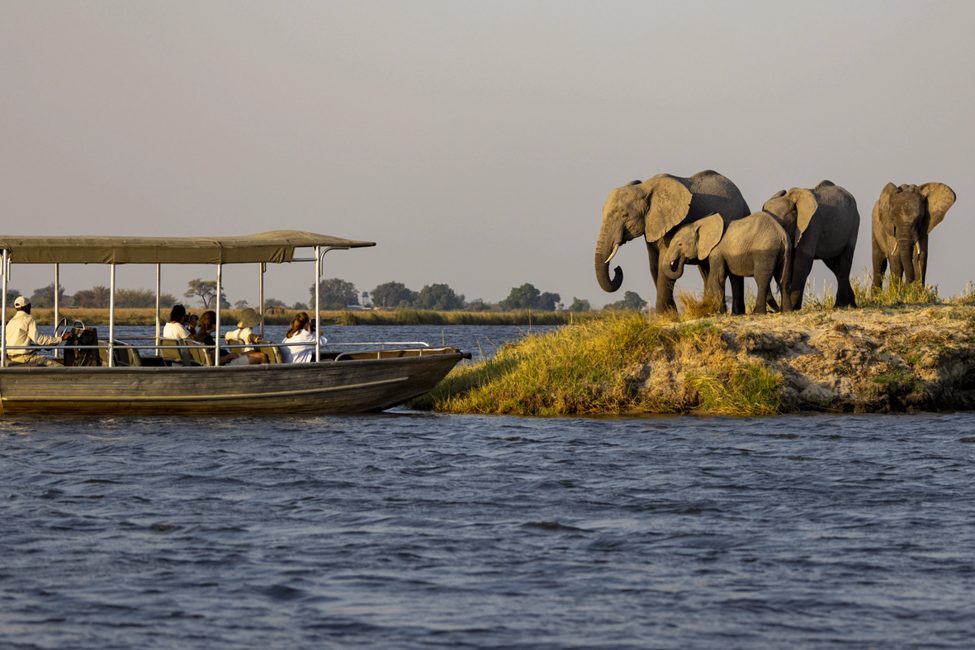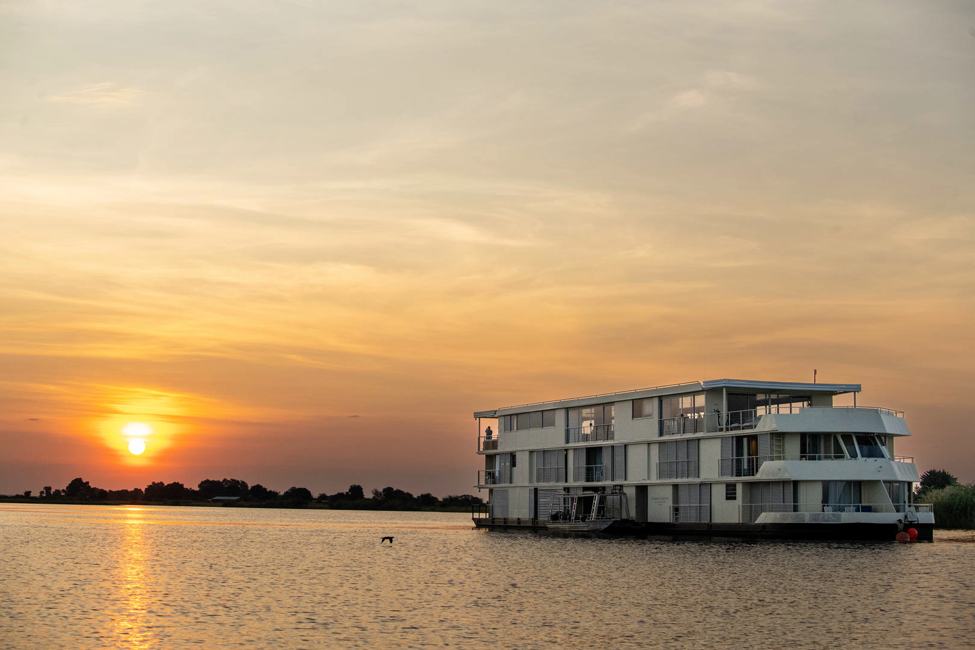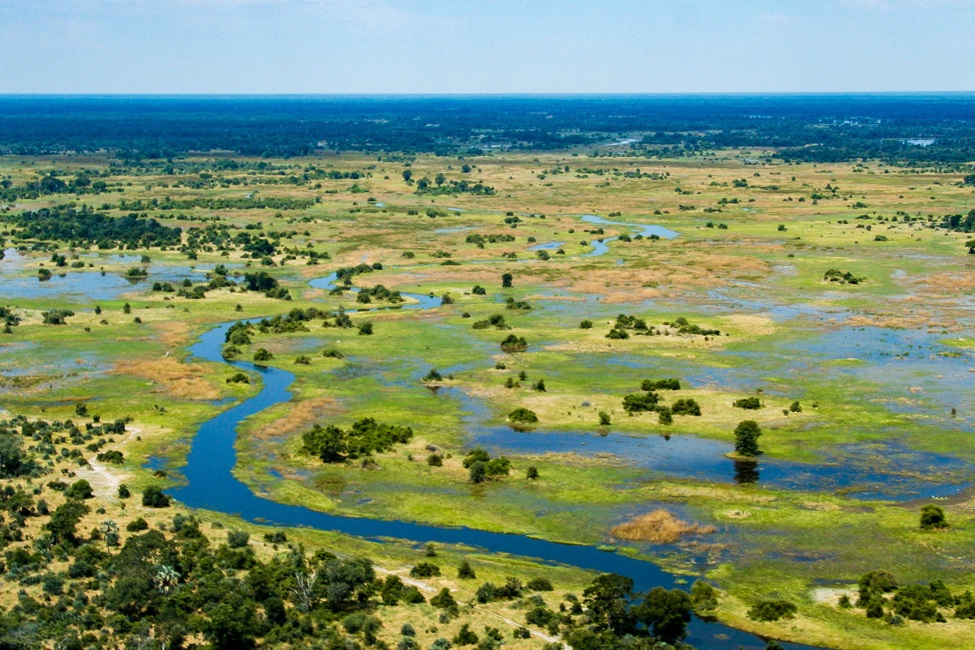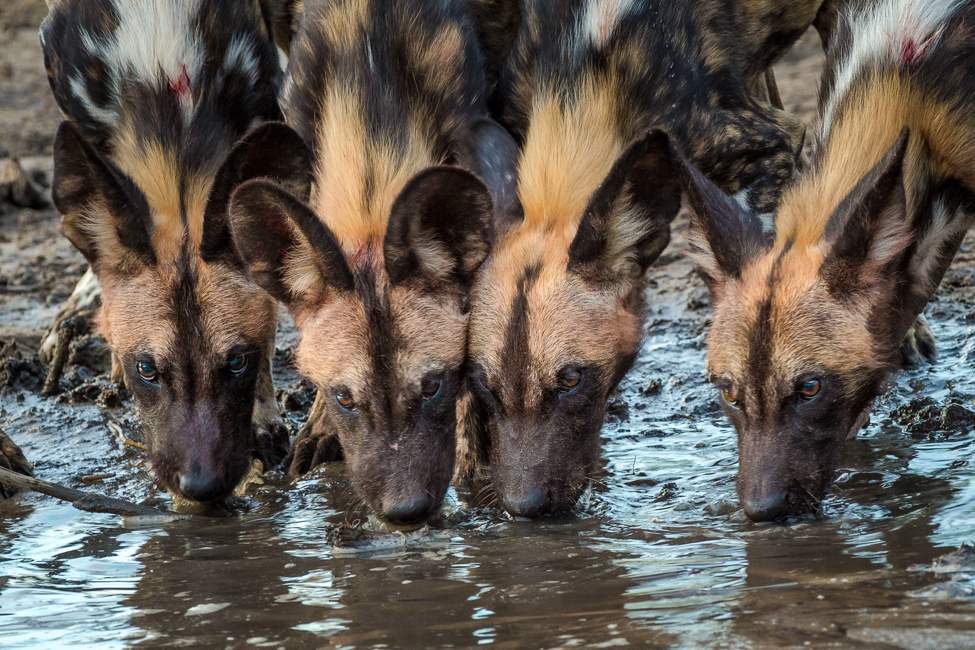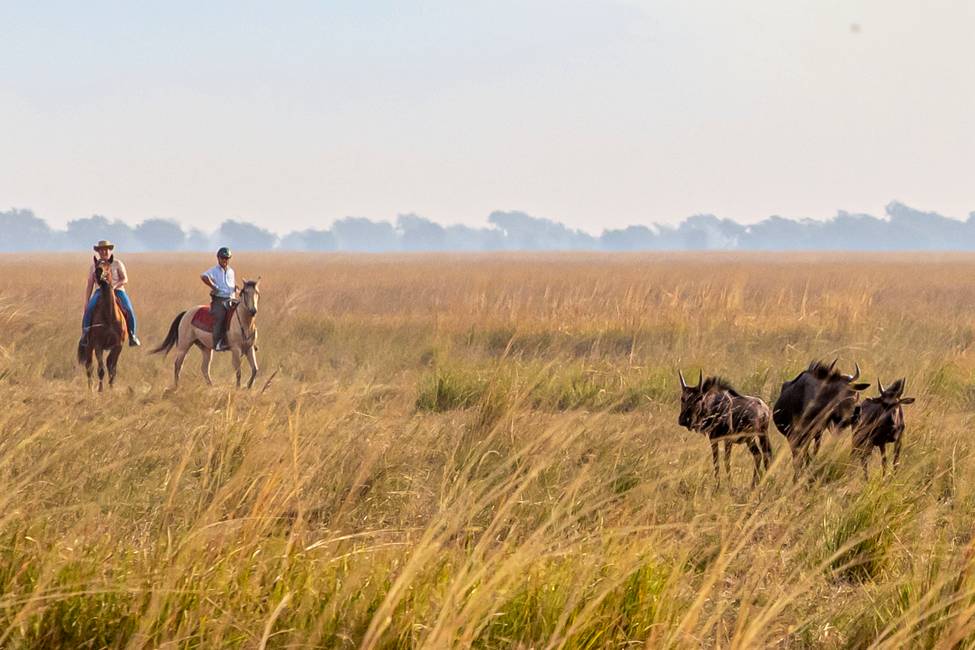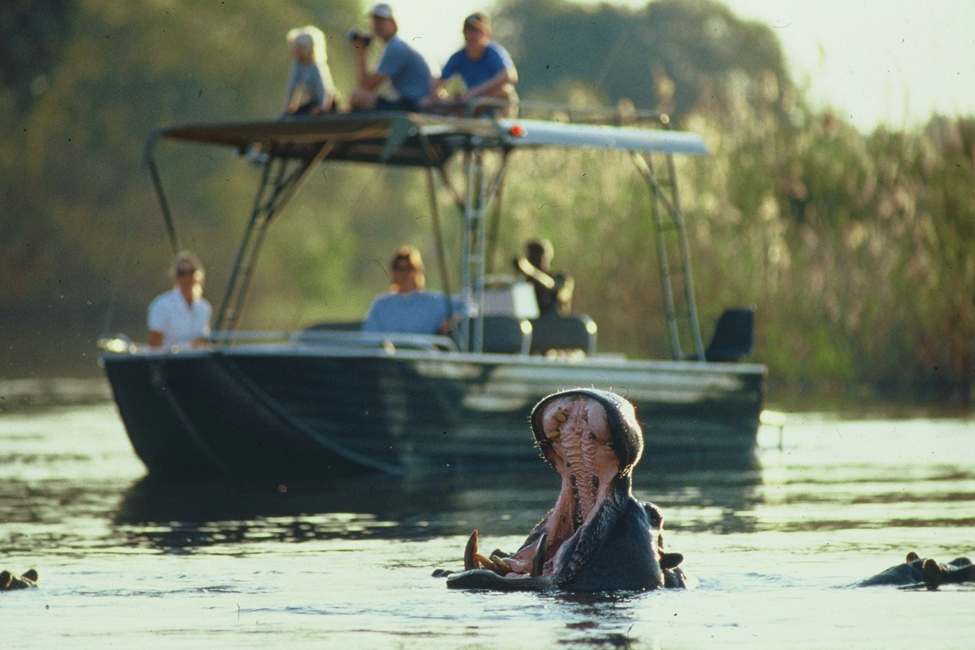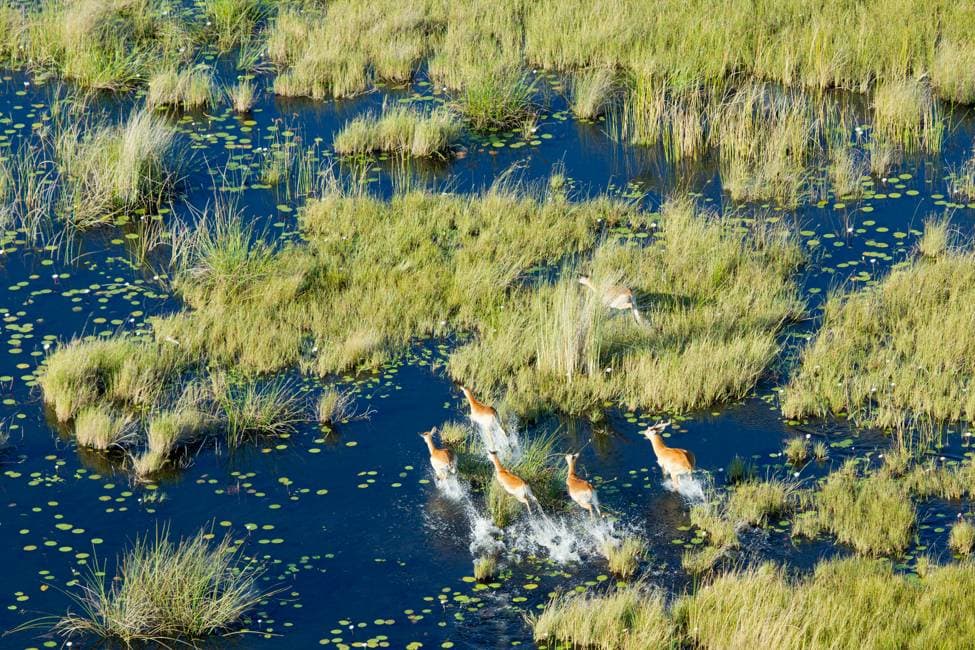The Savuti area of Chobe is famous for its high number of lions. Photo by Phil Howells.
Your Guide to Chobe National Park’s Unique Areas
Located in the far north of Botswana, Chobe National Park is one of the premier safari destinations in southern Africa. It’s known for massive elephant herds, abundant wildlife, and gorgeous landscapes. From riverfront safaris to dry savannah and dense woodlands, this 4,500-square-mile park is a beautiful blend of different habitats, each offering distinct wildlife experiences.
Established in 1968, Chobe National Park is named after the Chobe River, which acts as a natural boundary between the park and neighboring Namibia. The park also lies near the borders of Zimbabwe and Zambia, close to the famous Victoria Falls.
In this blog post, we’ll take a closer look at the different areas of Chobe National Park and explore what makes each one so unique, giving you a comprehensive guide to this incredible wildlife haven.
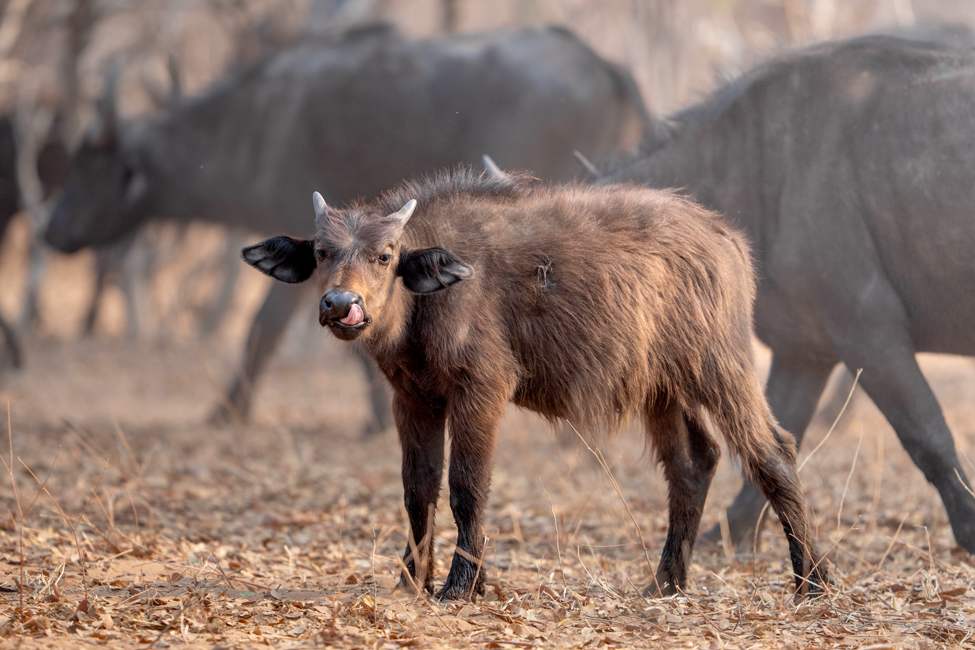
Cape buffalos graze near the riverfront in the Serondela area of Chobe National Park. Photo courtesy of Chobe Game Lodge.
Chobe Riverfront: The Heart of Elephant Country
The Chobe Riverfront is arguably the most famous area of the park, primarily due to its large population of elephants, which can often be seen coming down to the riverbanks to drink. The landscape along the riverfront, also known as Serondela, is equally fascinating as it shifts from lush floodplains to open woodlands and grasslands.
Why it’s unique:
- Elephant herds. The Chobe Riverfront is home to the world’s largest population of African elephants. You can see groups on the riverfront most times of year, and during the dry season (May to October) herds gather along the river in truly massive numbers.
- Water-based safaris. Unlike other areas of the park where land-based game drives are the primary option, the riverfront allows you to experience wildlife from a completely different perspective—by water. On a boat cruise, you can get amazing views of elephants, hippos, crocodiles, and a variety of bird species.
- Birdwatching. The Chobe River is a birdwatcher’s paradise. The diverse wetlands and riverine forest offer a range of bird species, including the African fish eagle, kingfishers, herons, and the endangered wattled crane.
- Great for day trips. This area of the park is just an hour’s drive via paved roads from Victoria Falls, making it popular for day trips. Spend the morning on the Chobe River and and the afternoon on a game drive to see an incredible variety of wildlife in a short span of time.
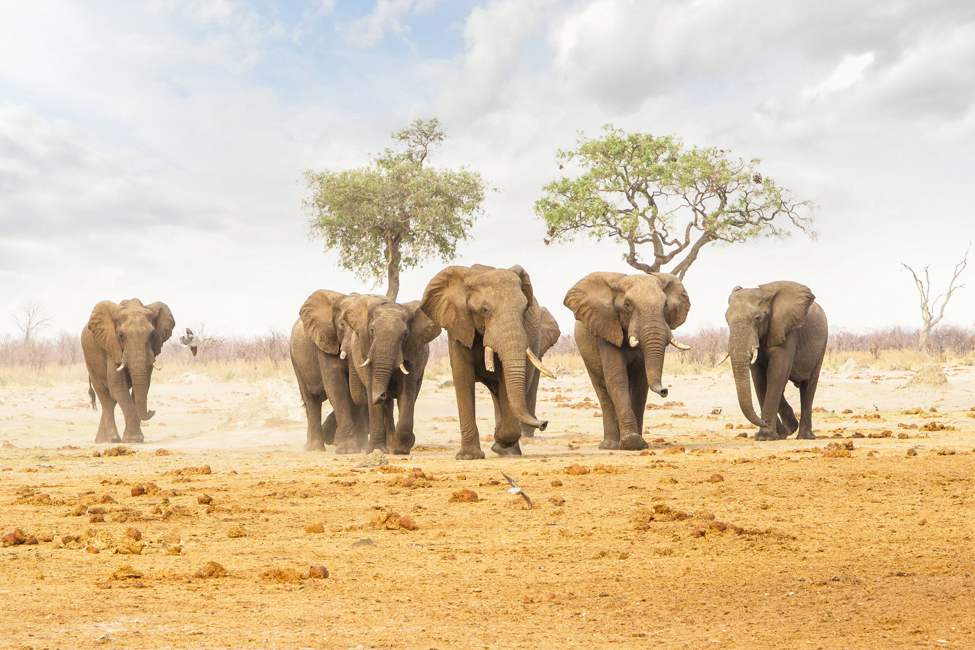
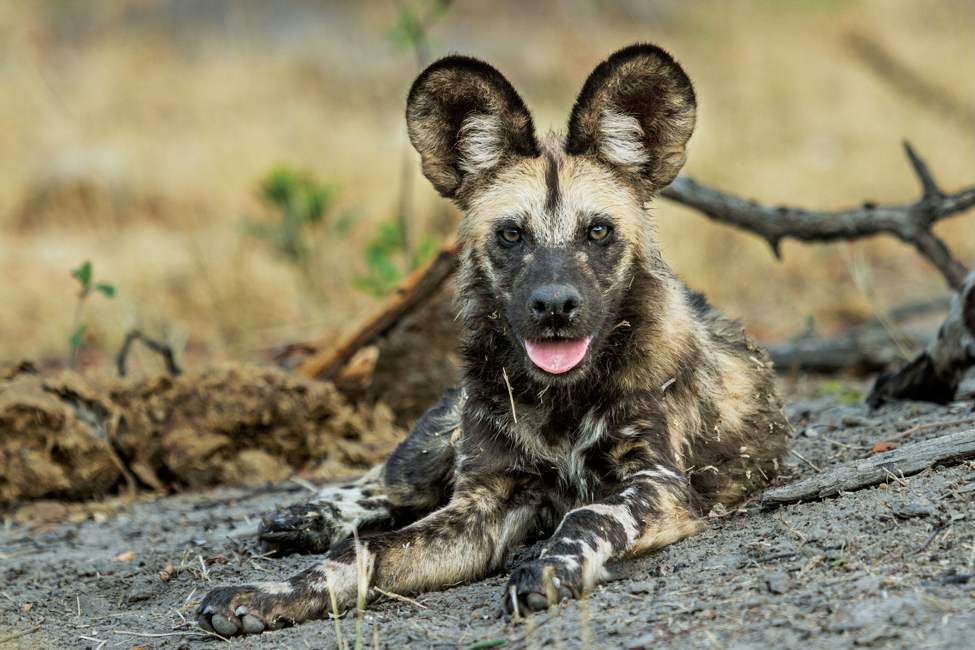

The Savuti area of Chobe National Park has an incredible array of wildlife. Elephant and African wild dog photos courtesy of Savute Safri Lodge; lion photo by Mariska Helmendach.
Savuti: A Land of Contrasts
The Savuti (or Savute) area is located in the southwestern part of the park and offers a very different experience compared to the riverfront. Known for its dry, open plains, Savuti is an arid, semi-desert region with dramatic shifts in vegetation and wildlife patterns based on seasonal rainfall.
Why it’s unique:
- The Savuti Channel. For years, the Savuti Channel was a reliable water source that attracted many animals, but in the 1980s, it mysteriously stopped flowing. In recent years, the channel has once again started to flow, creating a completely new landscape for wildlife to adapt to. The changing environment makes Savuti a fascinating place to visit.
- Zebra migration. During the rainy season, 20,000 zebras pass through as part of their annual 600-mile journey back and forth between the Chobe Riverfront and Nxai Pan National Park. The migration peaks November-December and again February-April as the zebras reverse course.
- Big cats and predators. Savuti is famous for its high concentration of lions, which prey on large herds of zebra and buffalo. This area is considered one of the best places in Africa to see lion hunting behavior. Other predators like leopards, cheetahs, and spotted and brown hyenas are also commonly seen here.
- Wildlife interactions. The wildlife in Savuti is generally sparser compared to the riverfront, but the landscape offers spectacular opportunities to observe predator-prey dynamics—especially during the dry season when water is scarce and animals gather around the remaining waterholes.
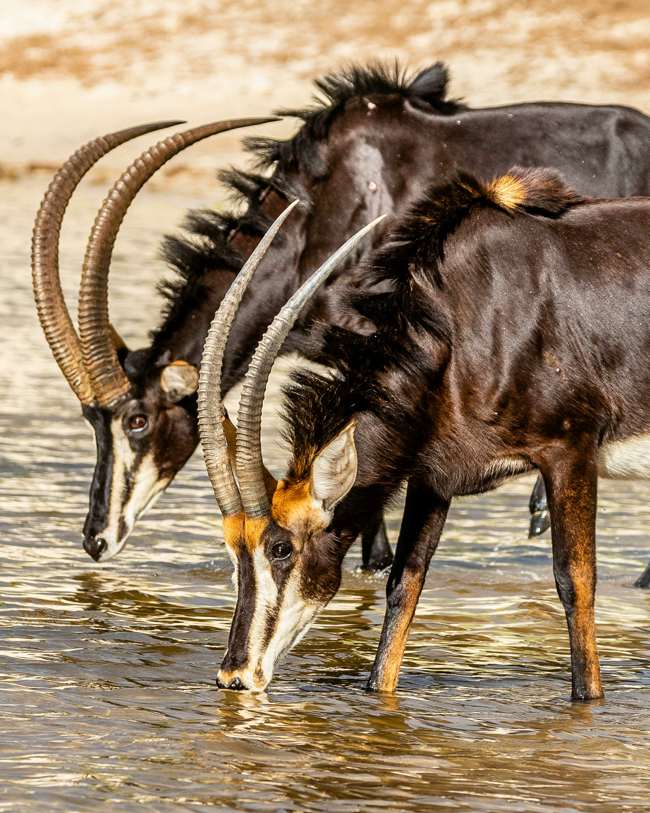
Black sable antelope drink in the Linyanti area of Chobe National Park. Photo by Peter Strydom.
Linyanti: Night Drives and Walking Safaris
Located on the western edge of Chobe National Park, the Linyanti area includes both parkland and private reserves at the intersection of the Savuti Channel and the Linyanti River. Its ecosystem, however, is quite different from the Savuti area. It features a lush array of lagoons, wetlands, floodplains, dense mopane woodlands, and a series of permanent water sources.
Why it’s unique:
- Exclusive game viewing. Linyanti is one of the most remote and tranquil regions of the park, which makes it ideal for those looking for a more private safari experience. Fewer visitors mean fewer vehicles, giving you a more intimate encounter with wildlife.
- Waterways and wetlands. The Linyanti River and its surrounding wetlands attract a variety of animals, including elephants, buffalos, lions, African wild dogs, and leopards. The area is also a great spot for birdwatching, with species like the saddle-billed stork and long-toed lapwing.
- Night drives. The private reserves in Linyanti are among the few places around Chobe where night drives are possible. This opens up opportunities to spot nocturnal creatures like porcupines, aardwolves, springhares, and servals.
- Walking safaris. Some lodges in the private reserves offer walking safaris, allowing you to explore on foot with a guide. You’ll learn about hidden details of the ecosystem, such as wildlife tracks, local plants, and smaller creatures like the “Little Five” safari animals.
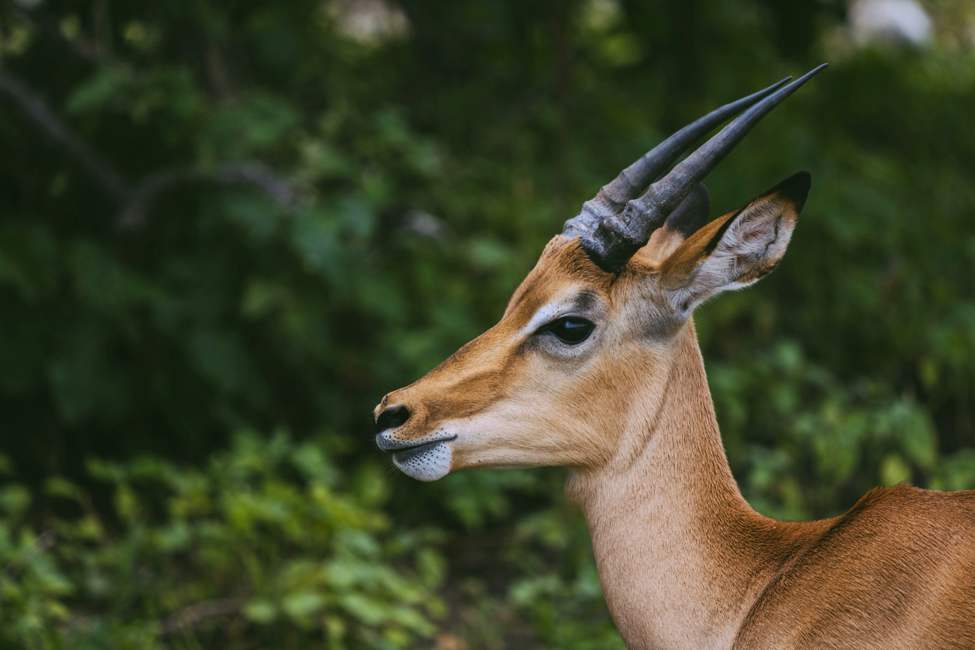
Photo by Roger Erdvig.
Nogatsaa and Tchinga: The Untamed Wilderness
The Nogatsaa Pans are about 50 miles south of Serondela, with the Tchinga Pans just a little further south. But in terms of solitude, they are a world away. Their heavy clay soil keeps rain from seeping into the ground quickly, offering reliable water sources for wildlife far into the dry season.
Why they’re unique:
- Large mammals. The seasonal wetlands attract some magnificent wildlife for you to see on game drives, including elephants, Cape buffalos, oryxes, roans, oribis, impalas, wildebeests, and zebras. You’ll see fewer predators here, though—the landscape is more challenging for them compared to Savuti or Linyanti.
- Off the beaten path. Among the least explored parts of Chobe National Park, Nogatsaa and Tchinga offer refreshing solitude. This area is perfect for those seeking to disconnect and truly immerse themselves in nature.
Explore Chobe on These Safaris
Visiting Chobe National Park
Chobe National Park offers an unmatched variety of ecosystems and wildlife experiences. In general, the dry season (May to October) is the best time for mammal sightings as wildlife concentrate around water sources. The wet season (November to April) brings lush green landscapes and is ideal for birdwatching, viewing zebra migration, or enjoying a more secluded experience, as there are fewer visitors to the park at this time.
No matter when you choose to visit, the magic of Chobe lies in its diversity, offering a range of landscapes, wildlife, and activities that make it one of the best places for a safari in Africa.
Contact Ujuzi today to plan your trip to this incredible national park!
Sign up for the Ujuzi Newsletter!
From top travel tips to innovative safaris and conservation movement, get inspired to plan your next African safari!
By submitting this form, you are consenting to receive marketing emails from: . You can revoke your consent to receive emails at any time by using the SafeUnsubscribe® link, found at the bottom of every email. Emails are serviced by Constant Contact


